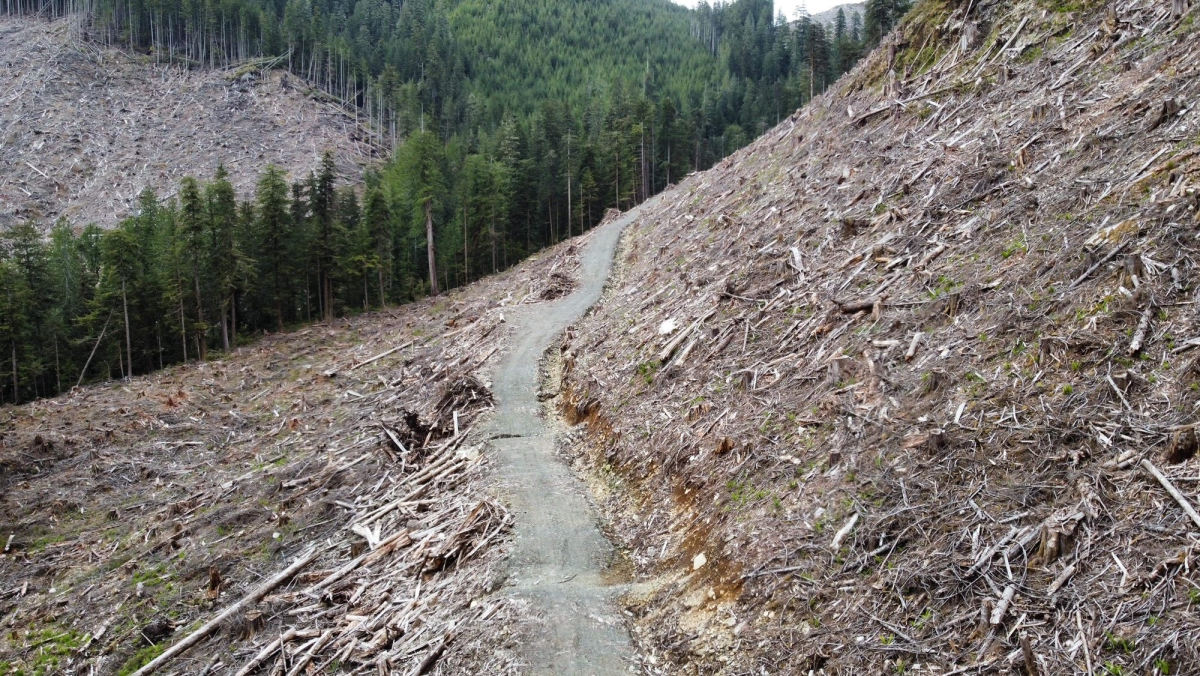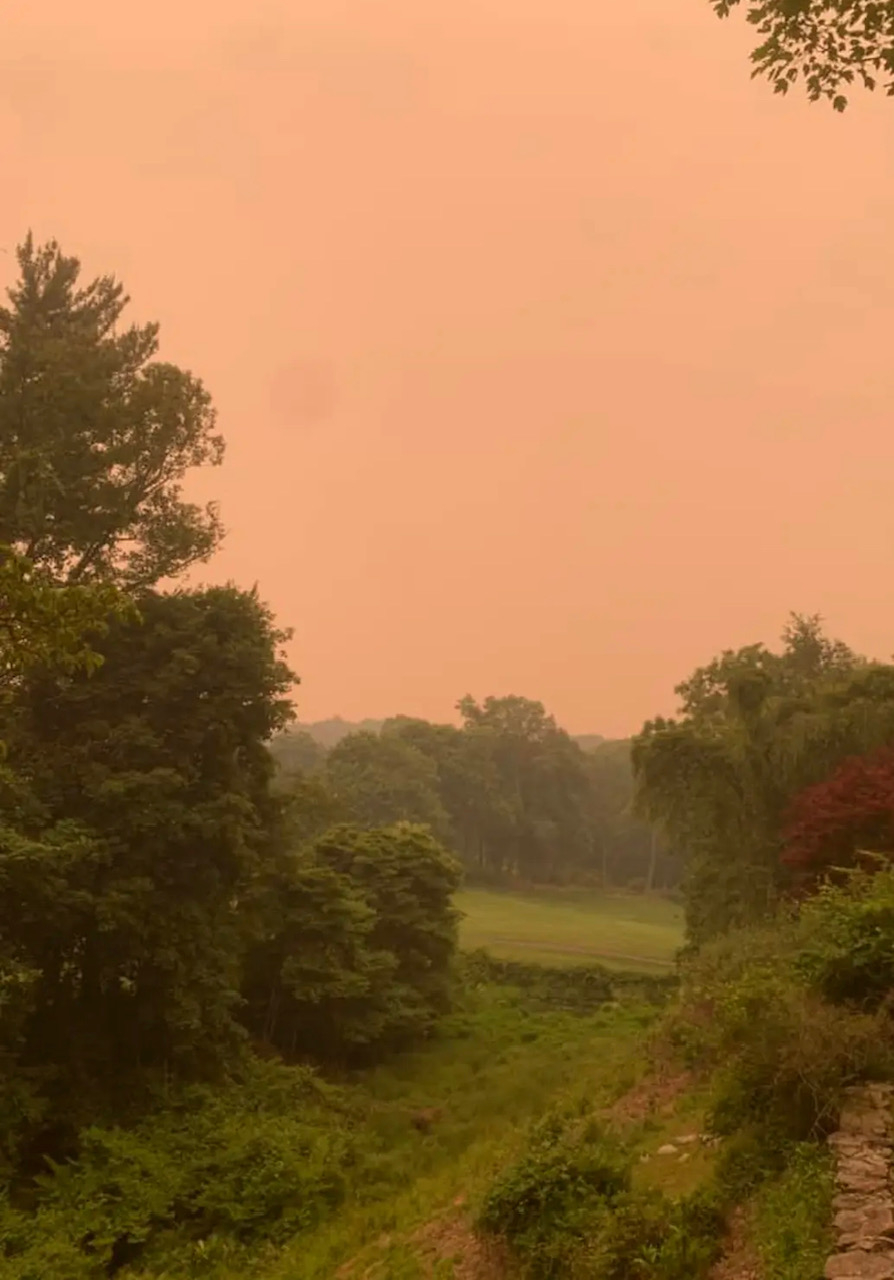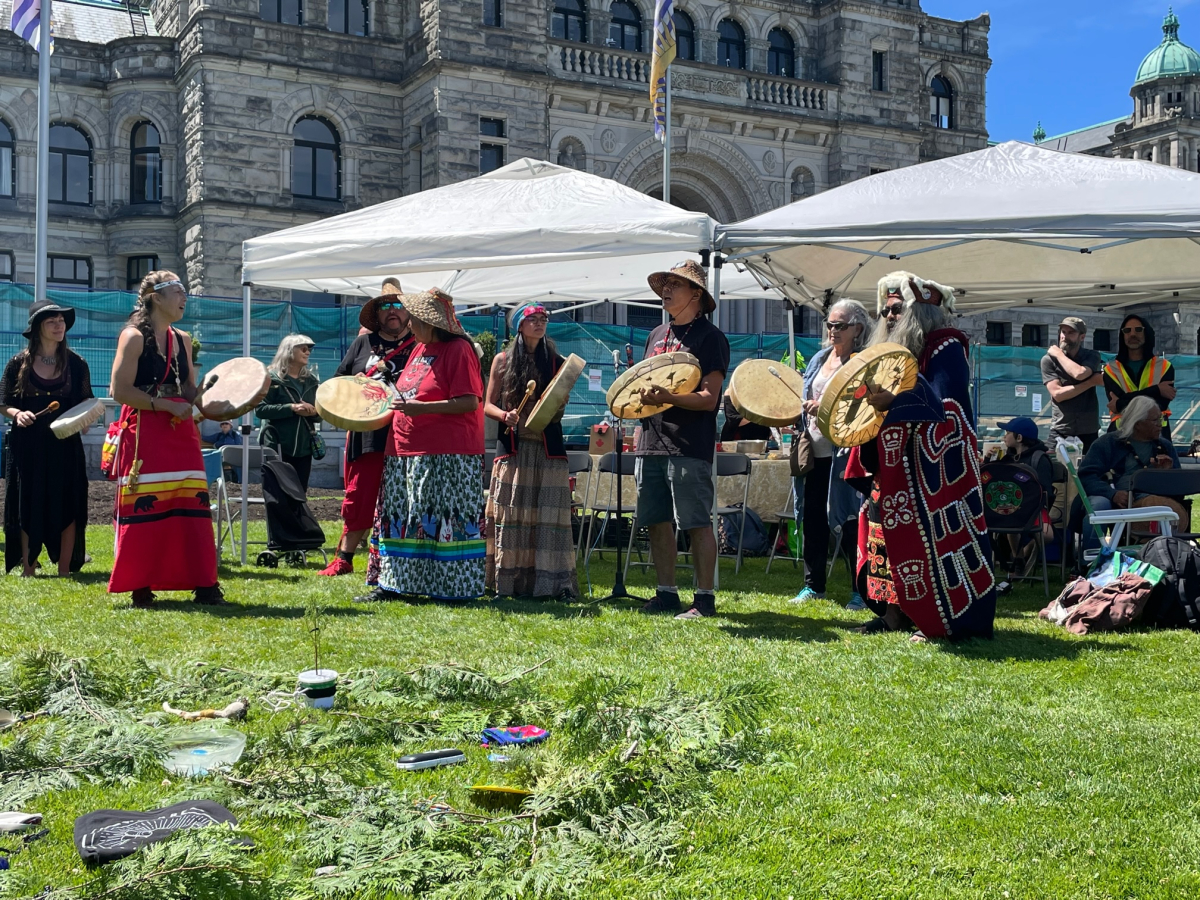Support strong Canadian climate journalism for 2025
Across eastern Canada and the U.S., as far as New York City, skies were heavy all week with smoke from over 400 wildfires burning across this country.
“Year after year, with climate change, we’re seeing more and more intense wildfires in places they don’t normally happen.” Prime Minister Justin Trudeau said at a June 5 press conference that entirely sidestepped the role of Canada’s oil and gas industry in fuelling the climate crisis and his government’s propping up of the fossil fuel sector with the $30-billion Trans Mountain pipeline expansion project.
Reducing carbon emissions is the only way to seriously reduce the impact of the climate emergency, maintaining biodiversity through impactful legislation is another.
Despite some good news on the forest preservation front, B.C., like Ottawa, generally tends to sidestep both.

On June 2, the B.C. government announced it was extending its old-growth logging deferral in the Fairy Creek watershed from its initial expiry of June 8, 2023 until Feb. 1, 2025. And a host of Fairy Creek protesters, including Angela (Rainbow Eyes) Davidson, were recently acquitted in a Nanaimo court for their part in the infamous blockades.
All of this is good news, but it would be a mistake to think the Fairy Creek movement has won its fight to save the trees. The province has said little about old-growth since the Fairy Creek deferral announcement and is continuing to allow logging in other sensitive areas.
Teal-Jones is still actively logging on Edinburgh Mountain, one valley over. Bugaboo Creek remains vulnerable to clear-cutting and hectares of old-growth earmarked for preservation in 2021 were revealed to have been indiscriminately clear-cut anyway.
Earlier this month, a Prayer Walk for Old Growth, organized by Protectors of the Salish Sea, the Dzunuḵ̓wa Society and the Mamas Movement was held in Victoria. The event was planned before the deferral announcement and though it was much smaller in scale than a previous rally, it was a powerful reminder that the fight to save the trees isn’t over.
After welcome songs, prayers and drumming by Indigenous leaders from multiple Coast Salish nations, the group, many of them supporters and participants in the blockades, made their way from the lawn of the B.C. Legislature and along Douglas Street. The procession paused briefly to gather in its back end at the top of Centennial Square then wound its way into the middle of the Folktoria event, where 200-plus spectators gathered to take in the showcase of performances by various Vancouver Island-based folk groups.

During a break between performers, prayer walk leaders Grandma Losah, Logan Sova, Paul Chiyokten Wagner and Angela Davidson stepped, uninvited, onto the stage where they sang, drummed and spoke passionately about the urgency of saving the remaining ancient trees on the island. The unspoken message in their temporary hijacking of the festival was that there has been no “paradigm shift” in the logging industry, as B.C.’s NDP government promised in its 2020 report, A New Future for Old Forests.
When asked about the smaller turnout, Wilderness Committee’s national campaign director Torrance Coste pointed out later that “it’s far easier to demotivate people than to motivate them.” The government is highly skilled at doing this and uses a number of tactics to its advantage, he adds. The most effective of these, says Coste, “are obfuscation and the ability to wield the complexity of the logging issue as kryptonite to counter-action.”
By perpetuating confusion around jurisdiction, authority and even its own stance on the need to protect the watershed’s biodiversity, the government makes it near to impossible for the average person and even land defenders to understand what is actually going on at Fairy Creek. People become confused and complacent. Confusion is the point. “Not many will jump into a lake,” says Coste, “if they can’t see the bottom.”
The B.C. government takes advantage of the muddle by holding out on laws around biodiversity and allowing more and more economic development for logging, mining, oil and gas, industrial agricultural and suburban sprawl at the expense of endangered species.

By disrupting the folk festival, prayer walk leaders are trying to do this very thing — help people see to the bottom by speaking plainly and from the heart. “Save the forest for the bears, save the rivers for the salmon,” sang Hisao Jim Ichikawa (Finch), a beloved figure of the Fairy Creek blockade. Ten minutes into the commandeering of their event, there was some shifting on lawn chairs.
“Get up!” ordered Grandma Losah, and not in a particularly gentle voice. “Get up and sing with us!” And while many remained seated, visibly bothered by the interruption in programming, some did.
Many began to clap in time to the drumbeats of the Indigenous leaders up on the festival stage. The message? We disrupt the current programming of the “wildfire season” to tell you that those trees, the TMX pipeline and those ancient fires are connected. The dots are there, the federal and B.C. governments won’t commit to connecting them, so we have to do it ourselves and demand accountability. Because there are a lot more fires on the horizon.






Comments
BC has a plan to end old growth logging. When all the old growth is gone, it will end.